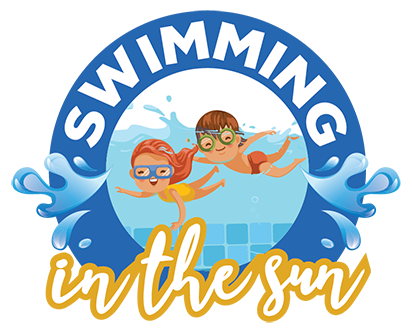Puddle Jumpers & Swimming Lessons
One of the questions I get asked a lot is if my students should wear Puddle Jumpers in the pool in between swimming lessons. It’s an excellent question. The answer is an absolute NO! Puddle Jumpers undermine and hinder any progress made in swimming lessons. If they are ready for swimming lessons then they are ready to retire the Puddle Jumpers.
Parents don’t want to undo the skills their children are learning in class and worry that they won’t be practicing those skills if they are just floating around chilling in the pool in Puddle Jumpers. It’s true, they will not. Puddle Jumpers make it A LOT harder for me to teach your child to swim.
Why are Puddle Jumpers so bad?
They keep the child vertical. That’s great in general for keeping your child’s head above water, but in swimming lessons I’m teaching them how to swim horizontally and Puddle Jumpers restrict them from practicing on the stomach. I need them to put their face in the water. A life vest works better keeping them floating and still give them the ability to practice putting their face in the water if they want to.
Puddle Jumpers limit arm movement. You need your arms to swim! It’s not all about the legs, but that’s what Puddle Jumpers teach kids, to “bicycle” their legs to maneuver around the pool. In no situation do people actually “bicycle” their legs when swimming so Puddle Jumpers are starting your kids off by teaching them how to swim completely wrong and I have to re-train them. Re-training is much harder and takes longer than teaching a child with zero swimming skills.
Kids don’t want to give them up because they are easy. They are happy to lazily float around the pool forever in their Puddle Jumpers. Learning is hard! Kids don’t want to do hard stuff. Life vests on the other hand, kids can’t wait to never have to wear again so they work so hard to learn how to swim so they will forever be free of the bulky life vest.
I will work with your child in class to get them used to, and safe in, their new vest, but the old Puddle Jumpers must be thrown away! Either throw away the Puddle Jumpers or throw your money away on swimming lessons.
Try to schedule some one-on-one time in the pool with your child between lessons to help them practice safely with the new life vest and without any floatation device on. If they are only in the pool while wearing a floatation device they believe they can swim and are REALLY confused when they jump in the pool without one on and immediately sink. The younger they are the less they understand that it’s the floatation device keeping them afloat and not themselves. The more time out of a floatation device the faster your child will learn to swim on his/her own.
If you have more than one child in lessons put a floatation device on the child you are not working with so they can float around safely. Then switch. I recommend no parent try to juggle more than 2 kids who cannot swim at a time in a pool by themselves. Aim for a maximum 2:1 Child:Parent ratio.
I suggest a thinner life vest that is designed for pools versus ones you’d use on a boat. The thinner material allows more movement while still keeping the child above water. They can practice swimming freestyle in a life vest, but they cannot do that in Puddle Jumpers. Practice is a key to your child learning how to swim independently faster and that is ultimately the goal.
Back to safety first… I have students as young as 2.5-years-old who can swim across their pool on their own and taking breaths. Swimming burns a lot of calories, which means it wears you out faster than other sports. Kids that small will wear out quickly swimming that hard. Kids especially are terrible judges as to how tired they are. You have to use your judgement as to when they are tired. You have to give them a choice of getting out of the pool or putting on a life vest. Usually once a child is able to swim on their own they are loathe to put a floating device back on. If they refuse, then they need to sit out and rest/nap until they have regained their strength. Drowning is fast and silent. When kids are tired they are more susceptible to accidentally inhaling water and going under.
Ultimately you will have to use your best judgement as to when your child needs to wear a floatation device in a pool
